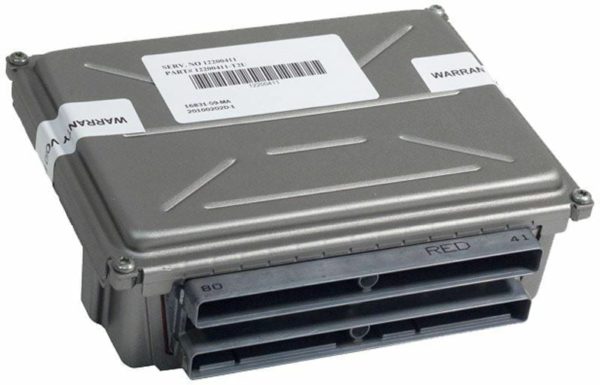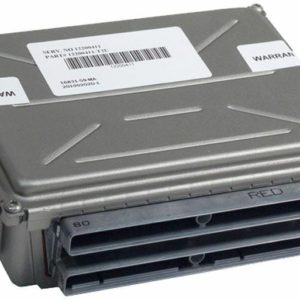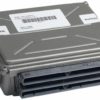Is Your GM Truck or SUV Acting Possessed?
If you’re driving a 2001-2002 GM vehicle like a Yukon XL 2500, Silverado, or Tahoe, you know they’re built to work. But when the Powertrain Control Module (PCM) starts to fail, it can feel like the entire vehicle has a mind of its own. I’ve seen it hundreds of times in my shop: a customer comes in complaining about a Check Engine Light that won’t go away, bizarre shifting behavior, a sudden drop in fuel economy, or even a frustrating no-start condition where everything else checks out fine. These aren’t random glitches; they’re classic signs of a failing PCM.
The PCM is the central computer for your engine and transmission. When its internal circuits or processors get damaged by years of heat, vibration, and electrical stress, the signals it sends and receives become corrupted. This leads directly to the performance problems that leave drivers and even some technicians scratching their heads.
The Brain of Your Operation: Understanding the GM P59 PCM
This specific module, often referred to as the P59 PCM, is the electronic brain controlling everything from fuel injector pulse width and ignition timing to transmission shift points and torque converter lockup. It’s a sophisticated piece of hardware that was used across an incredibly wide range of GM vehicles, from a 4.3L S10 pickup to a 5.7L Corvette.
Its location, often under the battery tray in trucks and SUVs, exposes it to a harsh environment. I’ve personally diagnosed countless PCM failures caused by corrosion from a leaking battery, which drips acid directly onto the module’s casing and connectors. Over time, this compromises the internal electronics, leading to intermittent and eventually permanent faults.
Expert Pro Tip: Don’t Just Chase Codes
A failing PCM can throw misleading trouble codes. For example, you might get a code for a specific sensor, like the throttle position sensor (TPS) or an oxygen sensor. A less experienced mechanic might replace the sensor, only to have the code return. In my 20+ years of diagnostics, I’ve learned to check the 5-volt reference signal at the sensor. If that voltage is erratic or missing, the problem isn’t the sensor—it’s the PCM that supplies the power. This simple check can save you from buying parts you don’t need.
The Direct-Fit Solution: A Pre-Programmed PCM Ready for Installation
This isn’t just a replacement part; it’s a complete solution. We take a fully tested and verified PCM and program it specifically for your vehicle using the 17-digit Vehicle Identification Number (VIN) you provide. This critical step ensures that the computer knows every detail about your truck or car, restoring its original performance and reliability.
- ✔ Eliminate Guesswork: Solves common issues like harsh shifting, poor idling, stalling, and persistent Check Engine Lights (CEL).
- ✔ VIN-Programmed for You: We flash the module with the latest GM-certified software calibration for your exact vehicle. This process corrects factory bugs and optimizes performance.
- ✔ True Plug-and-Play Potential: Once programmed, this module is ready for installation. In most cases, you will need to perform a simple security relearn procedure, which can often be done without special tools.
- ✔ Broad Compatibility: This PCM, service number 12201281, directly replaces several other part numbers, including 12200411, 12576160, and 52369718, ensuring a perfect match for a vast range of models.
Why VIN-Specific Programming is Non-Negotiable
You cannot take a PCM from another truck, even if it’s the same year and model, and expect it to work correctly. The VIN programming loads the correct software for your specific engine, transmission, axle ratio, tire size, and even theft-deterrent system (Passlock/VATS). Without this step, you could experience anything from a transmission that won’t shift out of first gear to an engine that won’t start at all because the security system doesn’t recognize the new module. We handle this complex process for you, so you receive a component that is truly tailored to your vehicle.
Installation and What to Expect
For most trucks and SUVs like the Yukon, Silverado, and Tahoe, the PCM is located on the driver’s side of the engine bay, under the battery tray. The process is straightforward for a DIYer with basic tools:
- Disconnect the Battery: Always disconnect the negative battery terminal first.
- Access the PCM: You may need to remove the battery and the battery tray to get to the module.
- Swap the Modules: Carefully unplug the wiring harness connectors from the old PCM and remove it. Install the new module and securely reconnect the harnesses.
- Reassemble: Reinstall the battery tray and battery, then reconnect the negative terminal.
- Perform Security Relearn: You will likely need to perform a security relearn. This typically involves turning the key to the ‘ON’ position for 10-15 minutes, then ‘OFF’, and repeating this cycle three times. This allows the vehicle’s Body Control Module to sync with the new PCM.
By following these steps, you can restore your vehicle’s brain and get it running the way it was meant to from the factory.


